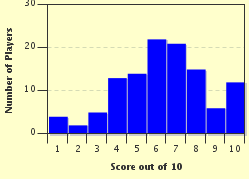Quiz Answer Key and Fun Facts
1. There is a theory that the London street on which the Bank of England is situated is named after the utensils used by the Worshipful Company of Merchant Taylors which is also close by. What is the name of the street?
2. On which London street might you have once bought chickens and turkeys?
3. Which London street is thought to have become a ghetto following an immigration policy implemented by William the Conqueror?
4. Which London street, just off the more famous Fleet Street, was most likely named after a fencing and sword fighting school?
5. One of the narrowest alleys in Britain, what is the name of the passage which is named after highwayman Dick Turpin's favourite London pub, which itself was named after a saint who was condemned to death in an unusual manner?
6. Which London street's name is reminiscent of a 1982 television series starring David Hasselhoff?
7. Urban legends suggest that one London courtyard was named after the murder of Lady Elizabeth Hatton whose mutilated body was found there in 1626, " with her heart still pumping blood." What is the street name?
8. Which of these London streets is said to take its name from one of the three ancient hills of London?
9. Cannon Street in London is often thought to be named for artillery or weapons. However, it is more likely that it is a shortened version of an original name which referred to the makers of what night-time necessity?
10. Which London street marks the route of an old ditch that ran along the outside of the London Wall? It was most well known for being used to dispose of waste and, particularly, dead dogs.
Source: Author
suzidunc
This quiz was reviewed by FunTrivia editor
Tizzabelle before going online.
Any errors found in FunTrivia content are routinely corrected through our feedback system.

